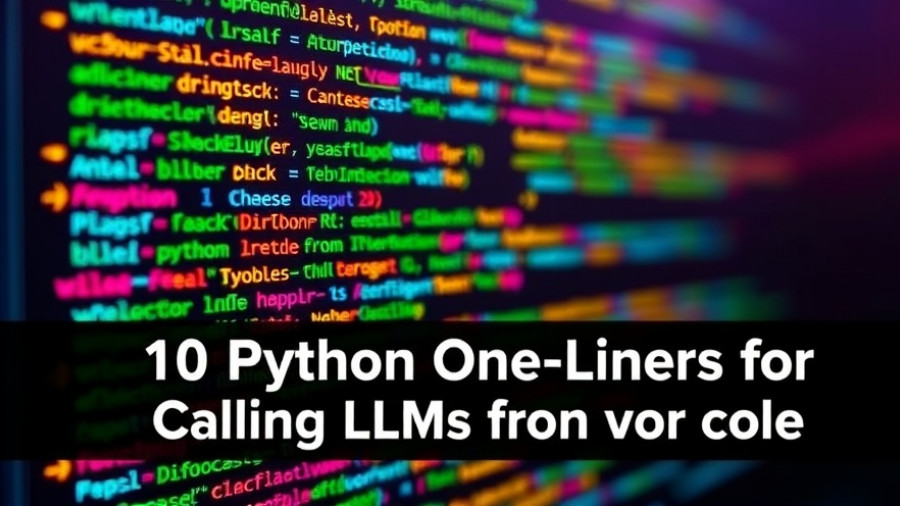
Unlocking Python: Streamline Your AI Journey
For small business owners looking to leverage artificial intelligence (AI) and machine learning, Python's versatility is unmatched. The process of developing machine learning solutions entails multiple stages, from data preparation to deployment, which can become daunting. However, with a few simple one-liners, you can streamline your workflow and make tasks more manageable.
Why Python One-Liners Matter
In the fast-paced world of AI and machine learning, efficiency is key. Python one-liners are specific lines of code that execute valuable tasks in a compact format, allowing you to accomplish more in less time. This is especially beneficial for small business owners who may not have extensive coding expertise but want to integrate AI tools into their operations. With these practical insights, you can enhance your knowledge and maximize the power of Python.
Top Python One-Liners for Machine Learning
Whether you are analyzing large datasets or building predictive models, here are some Python one-liners designed to simplify your machine learning development processes:
1. Efficient Dataset Downsizing
When facing a large dataset, testing your machine learning workflow can be cumbersome. To ease this, use the following one-liner to downsample a Pandas DataFrame:
df_small = df.sample(n=1000, random_state=42)This command generates a smaller subset, making iterative testing quicker and more efficient.
2. Combined Feature Scaling and Training
Why tackle multiple stages when you can handle them in a single command? This one-liner encapsulates feature scaling and model training:
pipe = make_pipeline(StandardScaler(), Ridge()).fit(X_train, y_train)Here, scikit-learn's make_pipeline function facilitates both scaling and training seamlessly.
3. Instantly Train Your Model
With the need for quick results, this one-liner initializes and trains a specific model with a single line:
model = Ridge().fit(X_train, y_train)This approach simplifies your workflow and accelerates your project's timeline.
Future Trends: Python’s Role in Business AI
The use of Python in AI and machine learning is on the rise among small businesses. As the automation of tasks becomes increasingly crucial for maintaining competitiveness, deploying AI tools requires less coding expertise than ever before. Python’s simplicity and readability allow small business owners to integrate these advanced tools without needing extensive programming backgrounds.
Common Misconceptions about Python in AI
Some may believe that advanced AI applications require deep programming knowledge. However, the reality is that communities and resources are continuously developing to assist users of all skill levels. Python's one-liners are a perfect example of this progress—breaking complex tasks into digestible parts.
Tools and Techniques for Small Business Owners
Understanding these one-liners is just the beginning. Small business owners should explore various Python libraries like NumPy, Pandas, and scikit-learn. Platforms like GitHub provide substantial possibilities for collaboration and learning from experienced developers, making it easier to innovate without the need for extensive coding expertise.
What You Can Do Next
As you dive deeper into the world of Python for AI, consider several critical steps: practice implementing the above one-liners, explore local workshops or online courses, and engage with communities focused on AI in business. Experimenting with real datasets will provide accelerated learning, revealing how these tools can transform your business operations.
By adopting these practices, you can not only enhance your understanding of machine learning with Python but also take actionable steps toward integrating powerful AI tools into your business.
If you're ready to take your small business to the next level by leveraging AI, start exploring these one-liners and invest time in learning the vast capabilities of Python.
 Add Row
Add Row  Add
Add 




Write A Comment